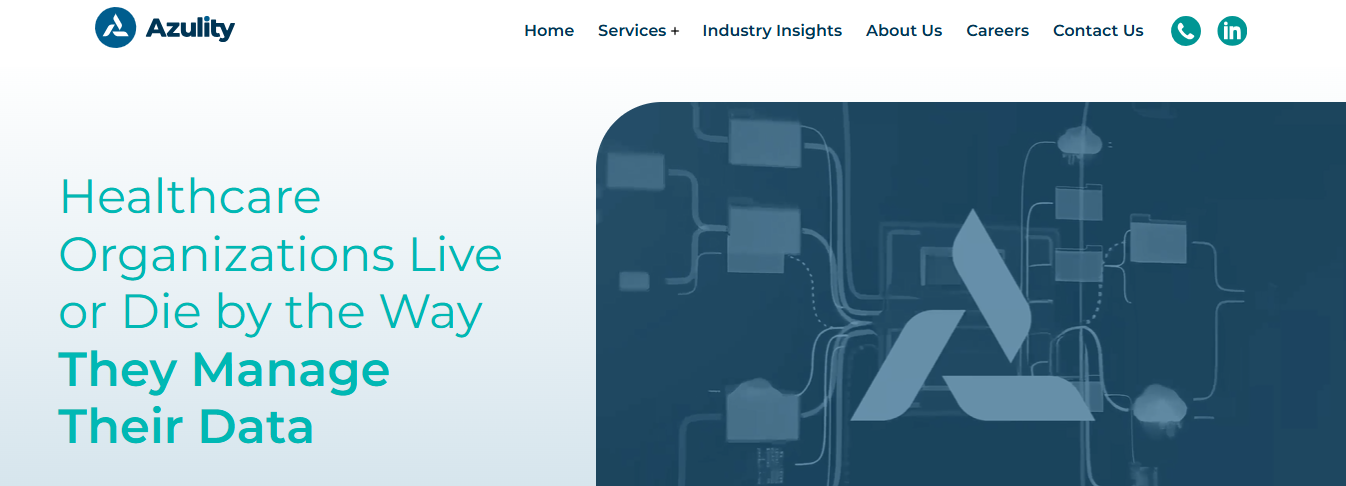A physician credentialing checklist is a crucial part of the healthcare credentialing workflow and can help speed up the verification process, preventing delays that can disrupt patient care. The credentialing checklist ensures that healthcare organizations collect and verify the necessary information about a physician’s qualifications and professional history.
Developing a thorough checklist helps streamline the credentialing process, making navigating easier. This guide will discuss the significance of a physician credentialing checklist and provide a comprehensive sample to help you get started.
Importance of Physician Credentialing


Patient Safety: Protecting Those Who Seek Care
Credentialing is crucial in maintaining patient safety. By verifying healthcare providers’ qualifications, training, and experience, organizations can confirm their competencies to deliver quality care. This process helps identify potential issues—such as malpractice history or disciplinary actions—that may impact a physician’s ability to provide safe care.
Quality Assurance: Promoting High Standards of Care
Credentialing promotes high standards of healthcare quality. By assessing a physician’s education, training, board certifications, and performance data, organizations can ensure that physicians meet specific criteria and adhere to professional standards. This helps establish a network of competent healthcare providers and improves the overall quality of patient care.
Legal Compliance: Meeting Regulatory Requirements
Legislation, regulations, and accreditation bodies require credentialing. It ensures that healthcare providers meet the legal and regulatory requirements to practice medicine. Compliance with credentialing standards is essential for healthcare organizations to receive reimbursement and meet regulatory obligations.
Insurance Coverage: Evaluating Physician Qualifications
Insurance companies require credentialing as a prerequisite for physicians to participate in their networks and receive reimbursement for services rendered. Credentialing helps insurers assess the qualifications and competence of healthcare providers, ensuring that they meet specific standards before allowing them to provide care to insured patients.
Hospital Privileges: Ensuring Safe Care Delivery
Many hospitals and healthcare facilities require physicians to undergo credentialing before granting them privileges to practice. This process helps ensure that physicians meet the hospital’s standards for safe and effective patient care. Physicians often need credentials to admit patients, perform procedures, and access hospital resources.
Professional Reputation: Establishing Credibility
Credentialing contributes to establishing and maintaining a physician’s professional reputation. Organizations can identify discrepancies or issues affecting a physician’s reputation by verifying credentials and conducting background checks. Credentialing helps promote transparency and trust among patients, colleagues, and the healthcare community.
6 Steps for Efficient Physician Credentialing


Step 1: Embrace Azulity for a Smooth Credentialing Experience
Take advantage of Azulity’s expertise and technology to optimize your credentialing workflow. Azulity specializes in healthcare master data management and provider credentialing services, bringing proven experience in implementing healthcare data solutions and credentialing across the US. Their comprehensive platform ensures consistent patient, provider, location, and claims data synchronization across all systems and departments.
Key features include healthcare MDM, provider MDM, reference data management, credentialing, and provider enrollment. Azulity serves healthcare technology leaders—from CIOs and CDOs to VPs of data platforms and credentialing—helping them eliminate the costly problems of fragmented data systems. Book a call to learn more about their healthcare master data management services today!
Step 2: Fill Out the Application—Online or on Paper
First, you’ll need to complete an application. Each facility has its application, so doctors must usually complete one for each facility they’ll be working at. These can range in length from 10 to 100+ pages in extreme cases.
Step 3: Collect Supporting Documents
Once you’ve applied, you’ll need to gather your supporting documents. This includes your medical licenses, Drug Enforcement Administration (DEA) ID number, malpractice insurance carrier and case information, board certification, education and work history, and health documentation. Many facilities also require activity or procedure logs.
Step 4: Expect Verifications
Once you submit your application and supporting documents, the medical staff services office begins verifying your malpractice carriers, work history, education, and peer references by contacting the organizations or individuals directly.
Step 5: Wait for Approval
Next comes the approval process, which can take some time. Generally, department heads and hospital boards meet to discuss the application and supporting documents and approve the physician’s employment. Some facilities require only the approval of the medical staff services office. This process can take up to a month or longer, depending on the number of meetings.
Step 6: Re-Credentialing (If Necessary)
Some facilities grant privileges only for the time the doctor will be working (for example, three months on a locum tenens assignment). Other facilities grant credentialing for a full two years for permanent and locum physicians. Either way, you may be required to reapply and provide documentation again to maintain your credentialing and hospital privileges.
Related Reading
Physician Credentialing Checklist To Help You


Basic Information & Personal Documents: Laying the Groundwork for Credentialing
Before assessing a physician’s qualifications, you must gather their basic information and personal documents. This initial data helps establish the provider’s identity to avoid potential discrepancies or fraudulent claims. The basic information and personal documents checklist includes:
- Full Name (as per government ID)
- Date of Birth
- Social Security Number (for the U.S.) or National ID
- Contact Information (phone, email, address)
- Citizenship or Work Authorization Documents
Education & Training: Digging into Qualifications
Next, you need to verify the physician’s education and training to ensure they completed their medical education and did not skip any crucial steps. The education and training checklist includes:
- Medical School Diploma (MD, DO, MBBS, etc.)
- Internship & Residency Completion Certificates
- Fellowship Completion Certificate (if applicable)
- Continuing Medical Education (CME) Credits
Licensing & Certifications: Ensuring Compliance with State and Federal Regulations
Before allowing a physician to practice, you must verify that they hold an active, unencumbered license in your state. Physicians must also maintain specific certifications and training to comply with federal regulations. The licensing and certifications checklist includes the following:
- Medical License (State/Provincial License)
- DEA Certificate (for prescribing medications in the U.S.)
- Board Certification (ABMS, AOA, or equivalent)
- BLS, ACLS, PALS Certifications (as required)
Work History & Experience: Understanding Background and Competence
Next, you’ll want to assess the physician’s history and experience to ensure they have the necessary skills to provide safe patient care. This will involve reviewing any prior work history and any gaps in employment. The work history and experience checklist includes the following:
- Curriculum Vitae (CV) with an entire work history
- Employer Reference Letters
- Malpractice History & Insurance Coverage
- Explanation for Any Employment Gaps
Background & Legal Checks: Ensuring Patient Safety
It’s critical to perform background checks on potential new hires to ensure they don’t threaten patient safety or your organization’s reputation. The background and legal checks checklist includes the following:
- Criminal Background Check
- Drug Screening Report
- National Practitioner Data Bank (NPDB) Report
- State Medical Board Disciplinary Actions (if any)
Professional Liability & Insurance: Verifying Coverage to Protect Against Risk
Before allowing a physician to practice at your facility, verifying malpractice history and insurance coverage is crucial. This step is essential to protect your organization if a patient files a claim against the physician for malpractice after receiving care at your facility. The professional liability and insurance checklist includes the following:
- Malpractice Insurance Certificate
- Claims History Report
- Coverage Limits & Expiration Dates
Hospital & Practice Privileges: Confirming Current or Previous Affiliations
Physicians often have a network of colleagues at other organizations that they rely on for consultations and referrals. Verifying their hospital and practice privileges can help ensure they are connected to a reputable network of providers. The hospital and practice privileges checklist includes the following:
- Hospital Privileges Application
- Current or Past Hospital Affiliations
- Peer References from Practicing Physicians
Tax & Financial Documents: Ensuring Compliance with Financial Regulations
During the credentialing process, you’ll also need to collect tax and financial documents to ensure the physician complies with regulations set forth by the IRS and insurance companies. The tax and financial documents checklist includes the following:
- W-9 Form (for U.S. physicians)
- Bank Account Details for Payroll
- Billing Provider Number (for insurance reimbursements)
Medicare, Medicaid & Insurance Enrollment: Verifying Third-Party Credentials
Finally, physicians must also be credentialed by Medicare, Medicaid, and commercial payers before they can bill patients’ insurance for their services. The Medicare, Medicaid, and insurance enrollment checklist includes:
- Medicare Provider Enrollment (PECOS in the U.S.)
- Medicaid Enrollment Forms
- CAQH ProView Profile (for commercial insurance credentialing)
- NPI (National Provider Identifier) Number
Miscellaneous: Accounting for Additional Requirements
In addition to the above items, other requirements may be based on your organization’s policies and the physician’s specialty. For example, certain specialties may have additional documentation requirements for credentialing. The miscellaneous checklist includes:
- HIPAA Compliance Training Certificate
- OSHA Compliance Training (if required)
- Telemedicine Certification (if applicable)
Azulity specializes in healthcare master data management and provider credentialing services, bringing proven expertise in implementing healthcare data solutions and credentialing across the US. Our comprehensive platform ensures consistent patient, provider, location, and claims data synchronization across all systems and departments.
Key features include healthcare MDM, provider MDM, reference data management, credentialing, and provider enrollment. We serve healthcare technology leaders – from CIOs and CDOs to VPs of data platforms and credentialing – helping them eliminate the costly problems of fragmented data systems. Book a call to learn more about our healthcare master data management services today!
Benefits of Physician Credentialing


1. Quality Control: The Healthcare Sector Can Rely On
The physician credentialing process brings quality control to the healthcare sector. This quality assurance process helps monitor the healthcare sector and ensures that high standards of medical care are adhered to for the benefit of patients. To maintain low insurance costs, insurance companies value only medical practitioners and practices that have demonstrated they can successfully perform the work in their specialties.
2. Patient Safety and Trust
Credentialing protects patient safety by ensuring that physicians have the experience and skills to perform sensitive procedures. The process helps to minimize the possibility of incorrect care that could occur in the hands of incompetent health workers. Patients and physicians need to rebuild a strong bond after a traumatic experience, and trust can be restored with the quality assurance presented by credentialing. Patients who understand that their physicians have the merit and qualifications to be their personal choice of providers can do so confidently, placing their highest trust in them.
3. Increase Revenues and Reimbursement
Proper credentialing allows medical practices to recover from thousands of dollars lost in revenue due to delays or denials of reimbursements. Adequate credentialing by the clinician or due to some mistake in the process can allow insurance payers to reimburse medical practices for their treatments. When a medical practice allows a physician to provide services before or during credentialing, the insurance payer can backdate reimbursement to cover those treatments.
4. Patient Base Expansion
Physician credentialing allows medical practices to have patients from previously unavailable sources, enabling facilities to receive patients whose payments are covered by health insurance. Over 90 percent of Americans had health insurance in 2019, with more than 60 percent having private health insurance. This strategy helps medical practices increase their customer base and diversify their revenue sources.
5. Reputation Enhancement
People always look for information on healthcare practices or their physicians before making up their minds. This could manifest by looking at their social media accounts, background, or online patient reviews. Obtaining medical credentials is a great option to build your online reputation. When your potential patients start exploring your medical practice and see the list of your credentials, they can see that your practice is qualified, reputable, and trustworthy.
6. Streamlined Hiring
During the credentialing process, doctors have to examine the place where they’ve lived, their educational background, their work experience, and if they have any other advantages. Suppose you originate from the field of medicine and hence require a credentialed medical practitioner. In that case, this accreditation identifies if the doctor meets the criteria needed to perform the job description tasks.
7. Competitive Edge
Medical practices must find the best ways to differentiate themselves from others to remain competitive in a challenging healthcare environment. The verification process identifies you as a qualified healthcare provider for the specific field, helping patients distinguish you from other healthcare providers specified in different fields.
Also, being certified can attract qualified tenants attached to a credentialed practice with a more extensive community of patients to your practice. The referral process, known as medical credentialing, gives your practice an advantage over those not in your market, giving you more time for growth.
8. Reducing Medical Errors
Credentialing leads to a decrease in the risk of errors by healthcare providers. Medical mishaps (medical errors) are the leading cause of death in the U.S. due to negligence, more than all the causes of accidental death combined. These errors were responsible for the deaths of around a quarter of a million people annually during the first decade of the 21st century on average. More than that, they were enough to make medical malpractice the third leading cause of death in the US, behind cardiac problems and cancer.
Related Reading
- Behavioral Health Credentialing Checklist
- Dentist Credentialing Checklist
- How to Do Credentialing in Healthcare
- Nurse Practitioner Credentialing Checklist
- Physician Credentialing Services Cost
Book a Call to Learn More About Our Provider Credentialing Services


Credentialing is how healthcare organizations verify physicians’ qualifications and ensure they can provide safe and effective care. The process involves reviewing a physician’s education, training, residency, licenses, certifications, and other relevant professional experiences. This information is typically gathered through primary sources and publicly available databases.
Credentialing ensures physicians have the necessary skills and competencies to perform their jobs safely. It helps healthcare organizations maintain high standards of care and protect patients from harm. The process is crucial for patient safety and quality assurance. Without proper credentialing, healthcare facilities may inadvertently allow unqualified or poorly trained practitioners to provide care within their organizations.
Uncredentialed or improperly credentialed physicians can pose serious risks to patient safety.
Furthermore, organizations that fail to perform adequate background checks on their staff can face serious legal and financial repercussions. For example, if an unqualified physician provides care to a patient who suffers injury as a result, the healthcare organization may be held liable for negligence and face lawsuits.
In addition, the Joint Commission and other regulatory bodies may impose penalties on organizations that do not meet compliance standards for credentialing. These penalties can include the suspension of accreditation, which can threaten an organization’s financial stability and reputation.
Who Is Involved in the Physician Credentialing Process?
The physician credentialing process typically involves several key players, including the following: The healthcare organization is ultimately responsible for verifying a physician’s credentials. This entity may be a hospital, group practice, or other healthcare facility. The organization’s medical staff or a designated credentialing committee usually oversees the process and recommends approval or denial. In large organizations, the process may be further divided among departments, such as the human resources and quality assurance teams.
The organization’s medical staff, or peer physicians, play a critical role in the credentialing process. Once a physician’s qualifications have been verified, the medical staff will review the information and recommend approval or denial based on their policies and procedures. An internal team or an external credentialing verification organization (CVO) may conduct the background check. CVOs specialize in performing credentialing tasks and can help healthcare organizations reduce the administrative burden of the process.
Physicians also play a vital role in the credentialing process. They are responsible for providing accurate and up-to-date information about their training and experiences. The process can be expedited when physicians understand what to expect, maintain good communication with the organization, and respond quickly to requests for additional information.
What Is the Physician Credentialing Process?
The physician credentialing process can be broken down into several key steps that may vary slightly by organization. The following is a general overview of the typical workflow:
1. Application
The process begins when a physician submits an application for employment or privileges at a healthcare organization.
2. Verifying information
Next, the organization verifies the physician’s credentials by conducting a thorough background check.
3. Review and approval
Once all the information has been verified, the organization’s medical staff reviews the findings and recommends approval or denial.
4. Ongoing monitoring
The credentialing process is not over after a physician has been granted privileges or employment at a healthcare organization.
Organizations must continually monitor physicians’ credentials to ensure they remain qualified to provide care. This ongoing monitoring may involve regularly checking for updates on state and federal databases and performing routine background checks.
What Are the Challenges of Physician Credentialing?
The physician credentialing process can be long and tedious. It often takes several months to complete. This is mainly due to the administrative burden of the process, which can pose challenges for both healthcare organizations and physicians.
For example, the average healthcare organization uses 10 to 20 people to manage the credentialing process, and it can take up to 100 days to verify a physician’s credentials. In addition, the process can be confusing for physicians, especially those new to practice or transitioning to a new state or organization.
They may not understand what information is needed or how to obtain it, leading to delays in the process. Many stakeholders are also involved in credentialing, including the organization’s medical staff, human resources, and potentially even an external CVO. The more people involved, the more cumbersome the process can become.
Finally, the COVID-19 pandemic disrupted many healthcare operations and led to increased reliance on telehealth services. As a result, many organizations started to see an influx of applications from out-of-state providers to help alleviate the strain on their systems. These physicians often had to be credentialed quickly to ensure no lapses in patient care. The stress of the situation highlighted the challenges of the existing credentialing processes and increased calls for reform.
How Can You Streamline the Physician Credentialing Process?
Healthcare organizations can take several steps to streamline the physician credentialing process, including creating a detailed checklist for the organization and the physician, establishing clear policies and procedures, and using credentialing software to automate the process.
Leverage technology to verify credentials. In addition, organizations can improve the speed of the credentialing process by ensuring good communication with physicians. This can help reduce confusion and ensure the timely exchange of necessary information to verify a physician’s credentials.
